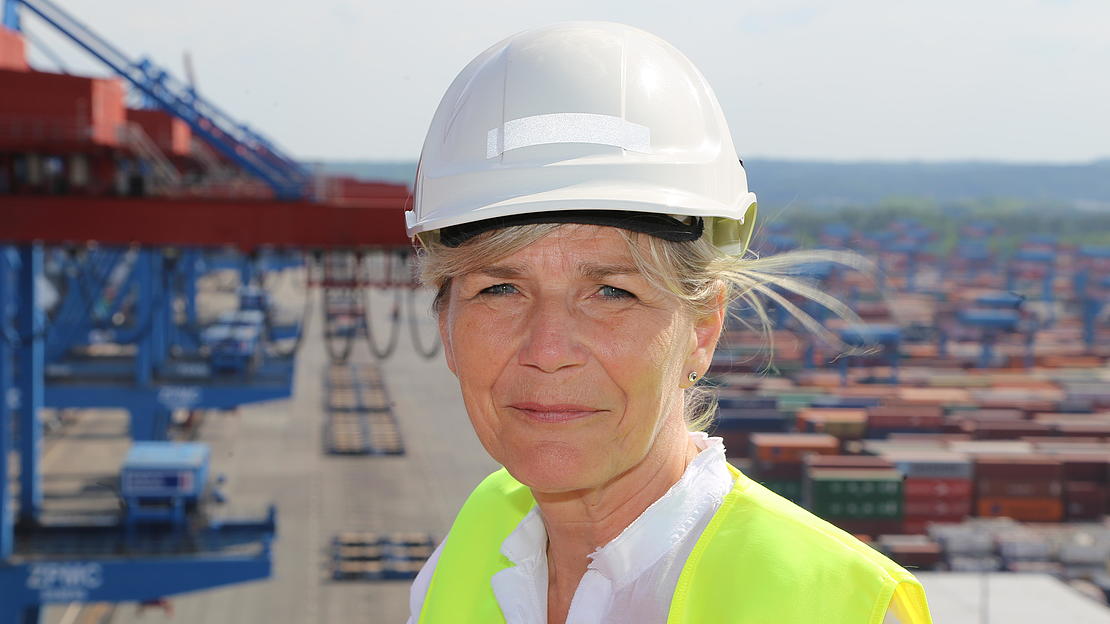
At the HHLA Container Terminal Altenwerder (CTA), this ambition has become a reality. The facility, which went into operation in 2002, is largely automated. For many years, it served as a blueprint for other terminal operators around the world.
John can quite rightly be proud of what took shape on the drawing board – and was built – at Altenwerder at the turn of the millennium. Even after the CTA had long been operational, competitors from around the world kept a close eye on developments at the Port of Hamburg.
Gerlinde John was aware of their interest. “Staying one step ahead of the others is what makes this job so exciting and appealing!” In the early days, many people doubted it was possible to realise such an ambitious project. “But not in our team!” says John. “We all did pioneering work together and wanted to get the terminal up and running.”
At HHLA, there are many people like John, who has been enthusiastic about new logistics and technical solutions her whole life. And the port has long ceased to be a domain for men. John studied Transportation Sciences during the East German era. Using analogue mainframe computers, she investigated systems for managing transportation. In 1982, she started work at the science and technology centre of the Deutsche Seereederei in Rostock, the national shipping company of the former GDR. There, she worked on developing a partially automated container terminal for the Port of Rostock.
A climate-friendly container terminal
CTA in Hamburg is a climate-friendly container handling facility. Primarily it is powered by green electricity, but how do the electrified processes work?
“That was one of my most exciting projects,” John reminisces. But the fall of the Wall put a stop to the work; the flow of goods changed, and container ships soon started to bypass Rostock. John’s expertise in the field of automated container handling was a stroke of luck for HHLA. The company was impressed by the East German’s in-depth knowledge and recruited her to work on the CTA, which was under construction.
In addition to many other innovations for which there was no global precedent at the time, a control centre was scheduled for construction at Altenwerder. Software had to be used to control and link automated container transporters and storage blocks as productively as possible.
Of course, at first there were plenty of problems to be solved in this completely new IT world. And the first idea didn’t always work out right away. John became a force of encouragement. “Whenever we thought things were going wonderfully, we were suddenly faced with new challenges. But we kept having new ideas!”
She could have retired in 2020, but the energetic engineer has postponed that for the prospect of developing something new one more time. On HHLA’s behalf, she coordinated the work in the joint venture with US company HyperloopTT. The partners were working together to develop a solution for a transfer station through which containers automatically enter the Hyperloop tube system. At the ITS World Congress in Hamburg in autumn 2021, a proud and enthusiastic Gerlinde John presented a virtual model of "her" HyperPort for the first time. And can now finally enjoy her retirement contentedly near Rostock.